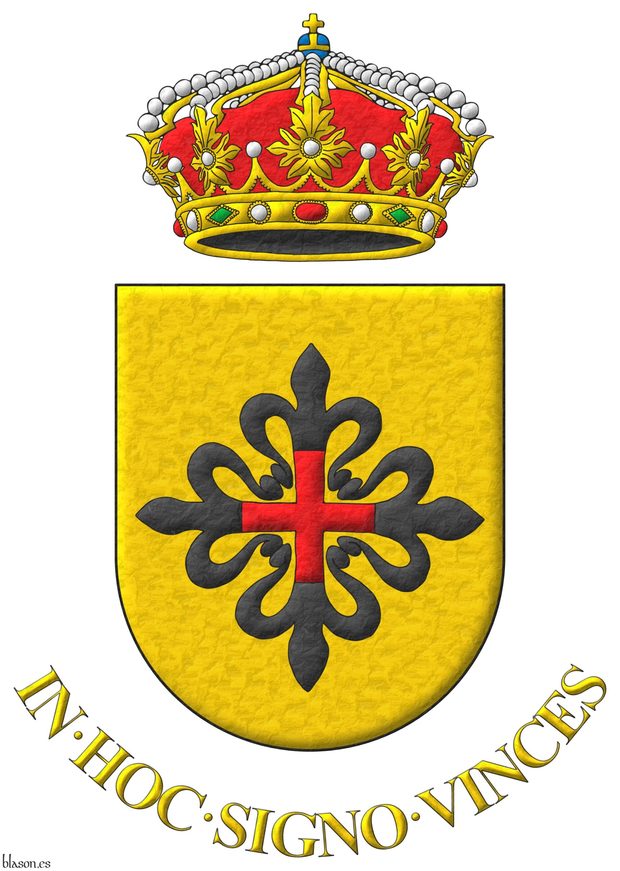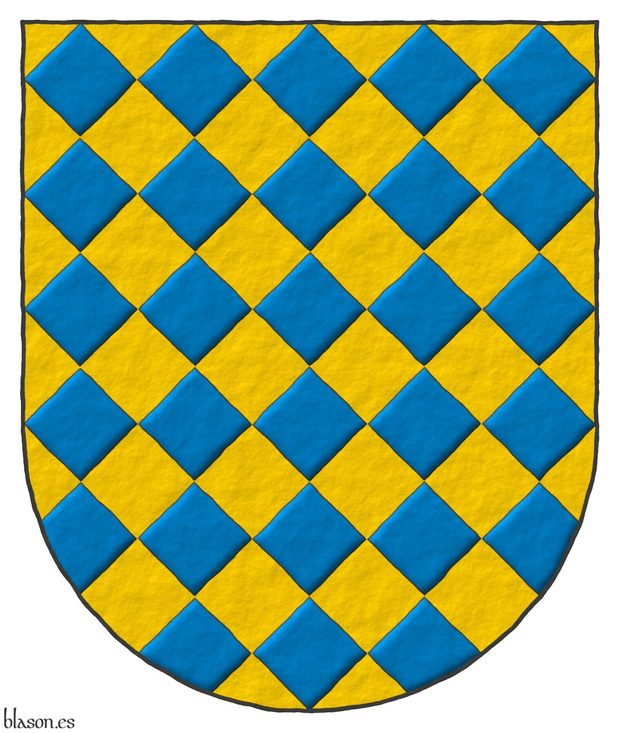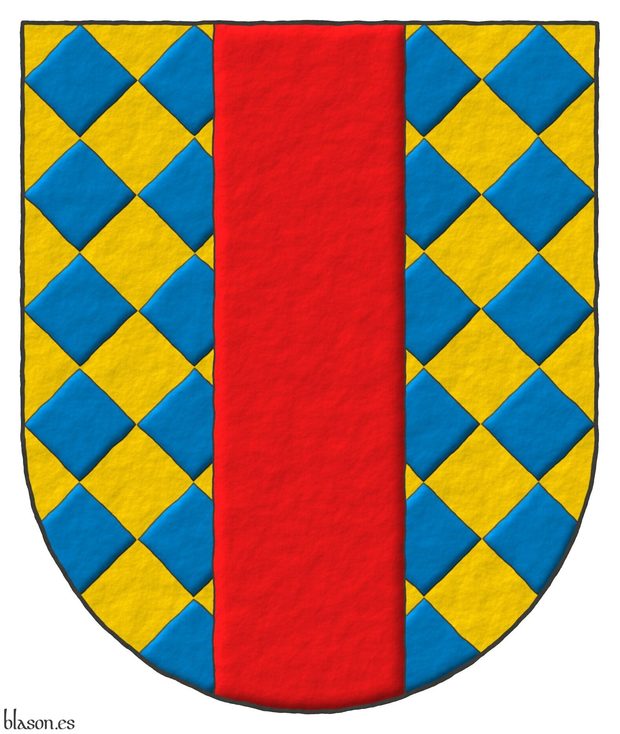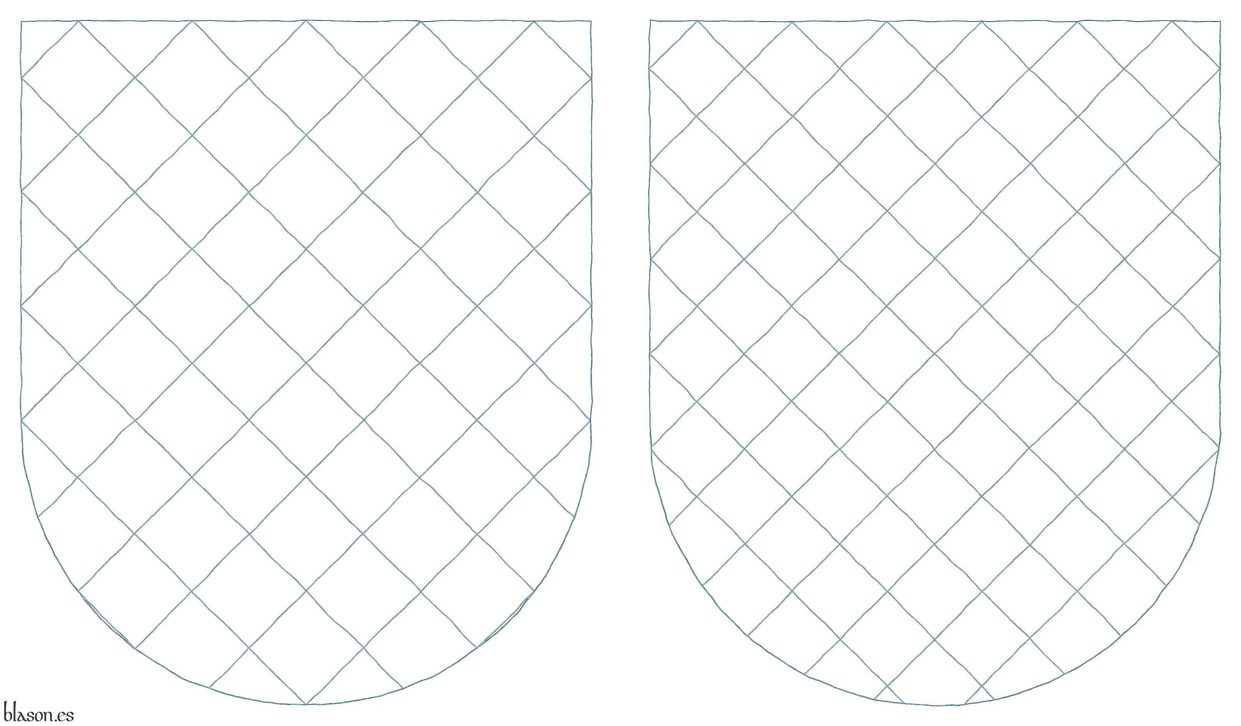
Cavalry Regiment Montesa, royal crown

In this sign, you shall conquer.
Argent, a cross of Montesa. Crest: A closed royal crown Or, with eight arches, visible five. Motto: «In hoc signo vinces».
Escudo de oro, una cruz de Montesa. Timbrado de una corona real cerrada. Lema: «In hoc signo vinces».
Coat of arms interpreted as follows: the shape of the shield is a semi-circular arch; the field has been illuminated in metal Or; the cross of Montesa is outlined in Sable and illuminated in Sable and Gules; the royal crown is closed, outlined in Sable and illuminated the metal in Or, the pearls in Argent, the orb in Azure and Or, the gemstones in Gules and Vert, the inner cloth in Gules, and the visible hollow at its base in Sable; and the whole has a slightly beaten metal finish.
Regimental Motto
The Latin motto «In hoc signo vinces» is translated as «In this sign, you shall conquer».
Globus cruciger ~ Orb
It is called orb ~ «globus cruciger», the first in Spanish and the second in Latin, referring to the part of the royal crown, a jewel, or a jewel itself that recreates the shape of the globe topped with a cross.
Blazon keywords: Without divisions, Or, Cross of Montesa, Cross couped, Cross, Crest, Closed royal crown, Crown and Motto.
Style keywords: Semi-circular, Illuminated, Outlined in sable and Soft metal.
Classification: Interpreted, Military, Army and Navy and Coat of arms.
Bearer: Montesa, Cavalry Regiment.


![Ver [Sánchez Albornoz, C.; 1965] en referencias bibliográficas. Libro abierto, hojas de plata, filo de oro, guardas de gules, tapas de sable.](../css/Libro.Bibliografia.png)
Sánchez Albornoz, C.; 1965
Claudio Sánchez Albornoz, «La auténtica batalla de Clavijo», Cuadernos de Historia de España, number 9, Buenos Aires, 1948.
Bibliographical reference of century XX.
The author is Sánchez Albornoz, C..
The following article cites this bibliographic reference:
External resource:


Lozengy 5x6 and 6x7
There are 2 rhombuses in heraldry: the lozenge and the fusil. I like to represent the lozenge, which is a less elongated rhombus than the fusil, as a square with its 2 diagonals placed one vertically and the other horizontally. Lozengy and fusilly consist of filling the entire space with lozenges, in the first case, or with fusils, in the second case, joined 4 by 4 at their corners.
[Avilés, J.; 1780a; page 25] writes «Fusils, Lozenges, and Mascles can be accolados, when they touch with their flanks; and to be so called, the entire Shield must not be filled with these figures, because in that case it would be called Fusilly, or Fuselado and Lozengy.».
In this case, two lozengy schemata of lozenges are presented with their 4 angles at 90o, the first 5 wide by 6 high, which is exact because the angles are 90o and it matches the 5x6 dimensions of the coat of arms and the second 6 wide by 7 high, which may be more suitable for shields that resemble the structure of per pale of three.
In [Cadenas y Vicent, V. de; 1987] one can see written both «losange» with «g» and «losanje» with «j», although the occurrences of «losange» with «g» are more than double those of «losanje» with «j».
In [Royal Spanish Academy; 2014] only the term «losange» with «g» is recorded, it says it comes from the French «losange» and defines it as «a rhombus figure placed so that one of the acute angles is at the base and its opposite at the top.».
Blazon keywords: Lozengy and Lozenge.
Style keywords: Semi-circular.
Classification: Schema.


Lozengy, comparison between 5x6 and 6x7
Comparison between lozengy of 5x6 lozenges and 6x7 lozenges based on the coats of arms of Thomas de Warbrentone and of Pierre de Forcade. It can be observed that, for example, in the case where there is a central pale of Gules, this fits better over the metal Or in the lozengy of smaller lozenges, the 6x7 one, than in the lozengy of larger lozenges, the 5x6 one.
Blazon keywords: Lozengy and Lozenge.
Style keywords: Semi-circular.
Classification: Schema.


Warbrentone, Thomas de

Thomas de Warbleton ~ Thomas de Warbrentone.
Lozengy Or and Azure.
Escudo losanjado oro y azur.
Coat of arms interpreted with: the semicircular base shape; the field of plain metal Or; the lozenges illuminated in Azure, outlined in Sable and with their 4 angles at 90o; the lozengy of proportion 5 x 6; and the whole with a raised-stroke effect.
Can be found in [Heralds' Roll, T.; 1280; shield number 647], in [St. George's Roll; 1285; shield number 245] and in [Charles' Roll; 1285; shield number 360].
Blazon keywords: Lozengy, Or and Azure.
Style keywords: Semi-circular, Illuminated, Outlined in sable and Freehand.
Classification: Interpreted and Personal.
Bearer: Warbrentone, Thomas de.


Thomas de Warbleton

Thomas de Warbrentone ~ Thomas de Warbleton.
Lozengy Or and Azure.
Escudo losanjado oro y azur.
Coat of arms interpreted in the following manner: the shape of the base is a semicircular arch; the field has been enameled with plain metal tint Or; the lozenges with their 4 rectangular and equal angles, are outlined in Sable and illuminated in Azure; the lozengy is 6 lozenges wide by 7 lozenges high, which can also be indicated as 7 lozenges in length by 7 lozenges in latitude; and the whole has received a marble finish.
Lozengy is defined by [Avilés, J.; 1780a; page 101] as «it is said of the Shield and pieces covered with lozenges».
Blazon keywords: Lozengy, Or and Azure.
Style keywords: Semi-circular, Illuminated, Outlined in sable and Marmoreal.
Classification: Interpreted and Personal.
Bearer: Warbleton, Thomas de.


La Forcade, Pierre de

Pierre de La Forcade ~ Pierre de Forcade (XV century).
Lozengy Or and Azure, a pale Gules.
Escudo losanjado oro y azur, un palo de gules.
Coat of arms interpreted with: the semicircular base shape; the field of plain metal Or; the lozenges illuminated in Azure, outlined in Sable and with their 4 angles at 90o; the lozengy of proportion 5 x 6; the pale illuminated in Gules and outlined in Sable; and the whole with a raised-stroke effect.
Blazon keywords: Lozengy, Or, Azure, Pale and Gules.
Style keywords: Semi-circular, Illuminated, Outlined in sable and Freehand.
Classification: Interpreted and Personal.
Bearer: La Forcade, Pierre de.

Continue with: Pierre de La Forcade.
-
Language
-
Categories of heraldry
-
Divisions of the field
- Without divisions
- Party per pale
- Party per fess
- Party per bend
- Party per bend sinister
- Tierce
- Tierce sinister
- Tierced per pale
- Tierced per fess
- Tierced per bend
- Tierced pallwise inverted
- Quarterly
- Quarterly per saltire
- Gyronny
- Party per fess, the chief per pale
- Party per pale, the sinister per fess
- Party per fess, the base per pale
- Party per pale, the dexter per fess
- Chapé
- Chaussé
- Embrassé
- Contre-embrassé
- Party per chevron
- Enté
- Enté en point
- Flanched
-
Metals
-
Colours
-
Furs
-
Other tinctures
-
Ordinaries and sub-ordinaries
-
Diminutives of the ordinaries
-
Other charges
-
Charges from Nature
Water, Eagle, Bald eagle, Eagle claw, Dorsal fin, Tail fin, Two hands clasped, Lark, Tree, Trunk, Rainbow, Atom, Barbel, Acorn, Bighorn sheep, Arm, Owl, Vulture, Horse, Head, Goat, Camellia, Thistle, Merino ram, Kapok tree, Stag, Doe, Crescent, Increscent, Chrysanthemum, Tail, Tail addorsed, Ermine spot, Hummingbird, Snowflake, Heart, Roe deer, Neck, Stags' attires, Roe deers' attires, Raven, Dolphin, Diamond, Tooth, Elephant, Trunk (elephant), Beetle, Emerald, Starling, Mullet, Mullet of four points, Star of David, Estoile, Male figure, Fleur de lis, Flower, Cornflower, Dogwood flower, Lotus flower, Hop cone, Bluebonnet, Puffin, Ash, Rooster, Claw, Talon, Goose, Heron, Seagull, Pomegranate, Sunflower, Swallow-tail, Falcon, Leaf, Boar, Goldfinch, Laurel, Barn owl, Lion, Lioness, Lion passant, Leopard, Lion rampant guardant, Lynx, Lily, Madonna lily, Flame, Wolf, She-wolf, Parrot, Moon, Hand, Apple, Apple tree, Sea, Martlet, Wing, Two wings in vol, Covert, Blackbird, Mount, Trimount, Fly, Wrist, Elm, Olive tree, Orbital, Bear, Palm frond, Palm tree, Dove, Poplar leaf, Panther, Jaguar, Vine, Paw, Forepaw, Foot (palmiped), Foreleg, Peacock, Chest, Pelican, Pelican in her piety, Dog, Brach hound, Warren hound, Fish, Hoof, Beak, Feather, Ostrich feather, Cinquefoil, Quetzal, Branch, Sprig, Frog, Shamrock, Caboshed, Oak, Holm oak, Rose, Double rose, Savage, Serpent, Plough of Ursa Major, Sun, Sun in splendour, Ray of the sun, Lightning flash, River, Stem, Badger, Tyger, Linden, Wheat, Wheat spike, Bull, Tulip, Udder, Escallop and Fox.
-
Artificial charges
Halberd, Plough share, Ace of spades, Anchor, Cyclamor, Torch, Bow, Arch, Harp, Non-classic artifact, Winnowing fan, Crozier, Conductor's baton, Pair of scales, Ship, Oar, Sail, Norman ship, Beret, Grenade, Ecclesiastical cap, Arm vambraced, Knight, Chain, Cup, Covered cup, Monstrance, Bell, Bell tower, Cannon, Cannon dismounted, Cannon port, Carbuncle, Castle, Ribbon, Clarion, Nail, Crucible, Cord, Dagger, Key ward, Turret, With a turret, Armillary sphere, Sword, Federschwert, Sabre, Parchment, Scroll, Skirt, Arrow, Club, Garb, Sheaf of tobacco, Scythe, Gauntlet, Axe, Buckle, Galician granary, Host, Bonfire, Polish winged hussar, Church, Fanon, Oil lamp, Spear, Spear's head, Fleam, Letter, Book, Open book, Closed book, Bookmark, Page, Line, Lantern, Key, Four crescents joined millsailwise, Hammer, Two-handed sword, Menorah, Mortar, Pestle, Number, Knot, Celtic Trinity knot, Water-bouget, Comb, Piano, Millstone, Millrind, Millwheel, Quill, Clay pot, Potent, Bridge, Cuffed, Hourglass, Chess rooks, Compass rose, Rosette of acanthus leaves, Mullet of six points pierced, Broken, Portcullis, Wheel, Wagon-wheel, Symbol, Sackbut, Drum, Geometric solid, Tetrahedron, Tower, Trident, Trumpet, Double vajra and Anvil.
-
Immaterial charges
Angel, Archangel, Basilisk, Heart enflamed, Sacred Heart of Jesus, Paschal lamb, Dragon's head, Dragon, Wyvern, Phoenix, Garuda, Griffin, Sea-griffin, Winged hand, Our Lady of Mercy, Pegasus, Saint George, Mermaid, Trinity, Triton, Golden fleece, Unicorn and Ouroboros.
-
External elements
-
Heraldic creations
-
References
-
Formats
-
Keywords on this page
Azure, Bibliography, Crest, Crown, Closed royal crown, Cross, Cross of Montesa, Cross couped, Outlined in sable, Army and Navy, Coat of arms, Schema, Fusado, Fusil, Personal, Gules, Illuminated, Interpreted, La Forcade, Pierre de, Motto, Lozenge, Lozengy, Marmoreal, Semi-circular, Metal beaten, Soft metal, Military, Montesa, Cavalry Regiment, Or, Pale, Without divisions, Century XX, Freehand, Warbleton, Thomas de and Warbrentone, Thomas de.


